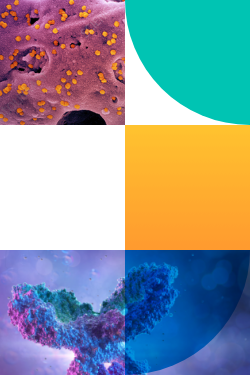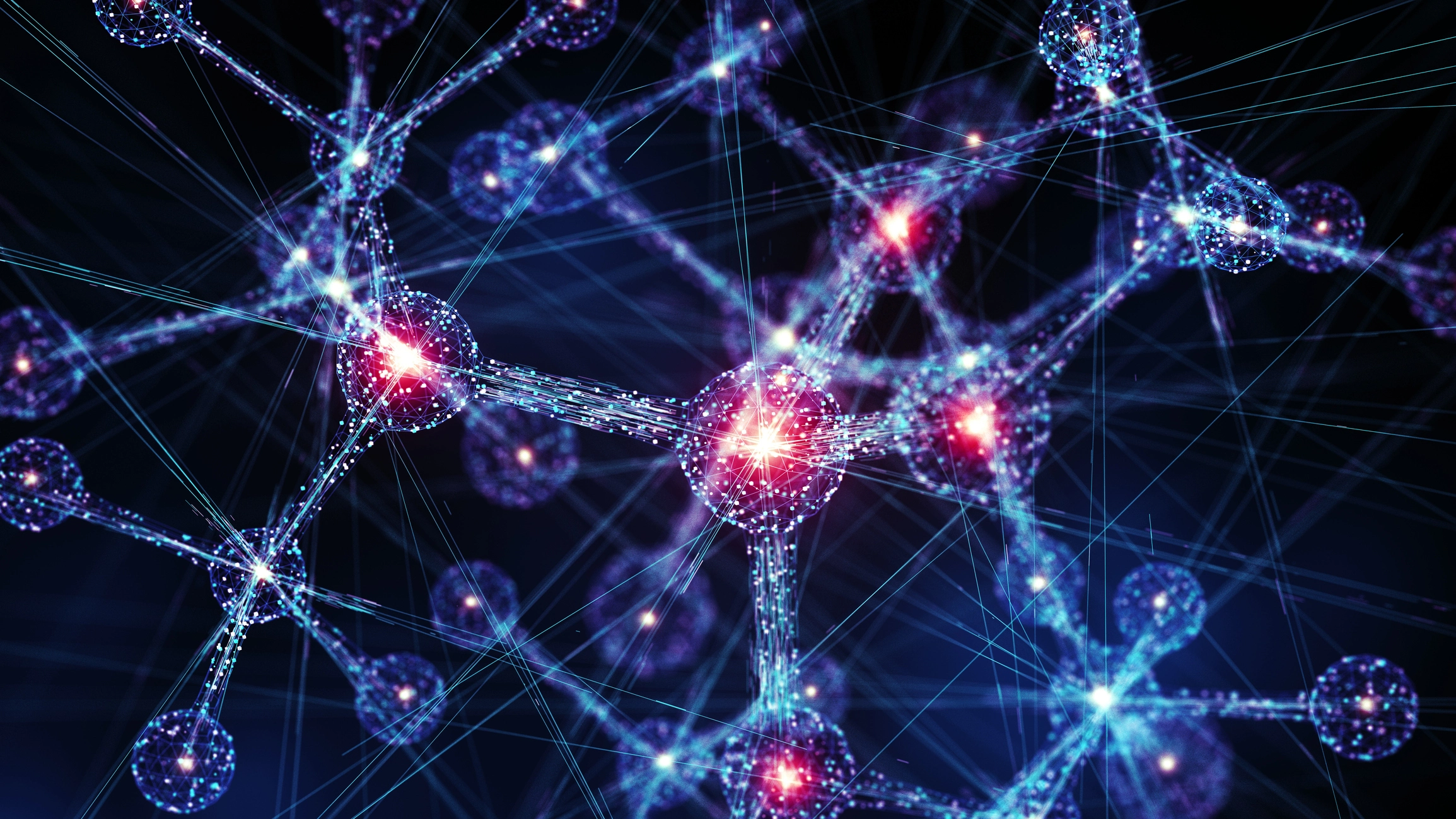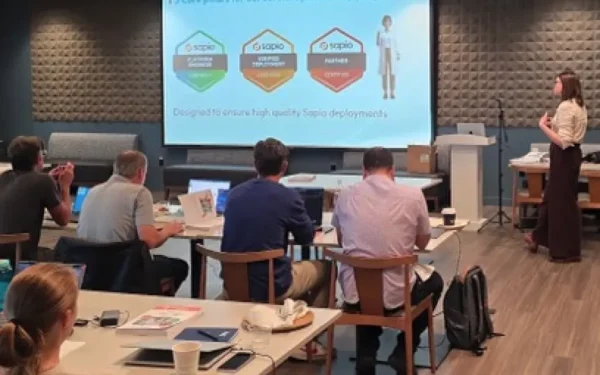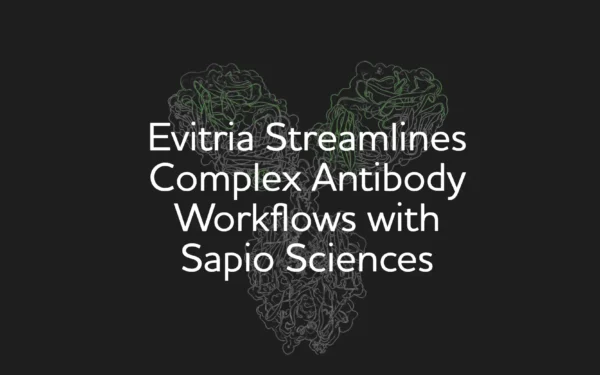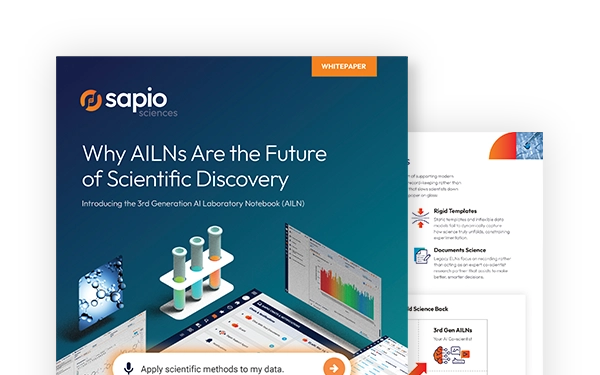Machine learning (ML) and artificial intelligence (AI) are reshaping the pharmaceutical industry by enabling faster, more focused drug discovery. ML accurately predicts molecular properties, empowering scientists to prioritize high-potential compounds earlier in screening campaigns, minimize trial-and-error experimentation, and accelerate discovery cycles while maintaining scientific rigor. This data-driven approach allows pharmaceutical research and development (R&D) labs to swiftly identify viable drug candidates and streamline the path from target identification to clinical development.
By integrating ML into core digital tools like electronic lab notebooks (ELNs), laboratory information management systems (LIMS), and scientific data management systems (SDMS), chemistry R&D labs can pair computational power with domain expertise to drive more strategic decisions and accelerate drug discovery timelines.
The need for faster, more precise drug discovery
Today’s pharma R&D environment is shaped by rising patient needs, increasing molecular complexity, and high therapeutic development costs. There’s a heightened urgency to deliver effective therapeutics, but traditional drug discovery processes, which often rely on time-consuming trial-and-error experimentation, struggle to keep pace. Given the expanding volume of molecular data and the diversity of chemical structures that need evaluation, these legacy methods are not scalable.
To be considered viable, drug candidates must meet a stringent set of criteria, including solubility, permeability, and toxicity thresholds. Manually assessing such multidimensional attributes across large chemical libraries is inefficient and prone to oversight.
This is where machine learning models excel. ML can rapidly analyze vast datasets, such as experimental results, molecular dynamics simulations, and other sources, to guide scientists in making critical decisions for drug discovery. Advanced algorithms like graph neural networks (GNNs) can represent molecular structures as graphs of atoms and bonds, allowing you to forecast compound behavior before synthesis begins.
The result? Faster, more precise compound selection that reduces unnecessary experimentation and brings promising molecules into development pipelines more efficiently. These efficiencies enhance early discovery and help define critical quality and data requirements for bridging exploratory, non-GLP studies with the rigorous expectations of GLP/CLIA-compliant operations.
How machine learning and artificial intelligence enhance drug discovery
ML- and AI-powered drug discovery offers several benefits to pharma R&D teams:
Faster prioritization
ML models perform in silico predictions of molecular properties, enabling scientists to evaluate compounds for efficacy and safety prior to wet lab testing. Compounds can be ranked based on desirable characteristics such as permeability, solubility, and toxicity, ensuring that only the most promising candidates move forward. Once these compounds have been identified, they can be handed off to other specialized scientific teams for testing in both primary and secondary assays.
Better decision support
ML and AI enhance expert chemists’ judgment by uncovering hidden patterns in large, multidimensional datasets. For instance, GNNs can model complex interactions within chemical entities, providing clarity on how a molecule might behave in biological systems. This supports more informed go/no-go decisions during hit triage and lead optimization.
More efficient workflows
By using ML to rank candidates based on multi-parameter profiles, including potency, selectivity, and metabolic stability, scientists can focus screening and characterization efforts on compounds with the highest likelihood of success, reducing cycles of testing, reformulation, and optimization.
Practical use cases: Where ML delivers real value
By accelerating compound evaluation and enabling more informed decision-making, ML empowers you to improve efficiency, reduce costs, and increase the likelihood of success. Below are key real-world scenarios where ML delivers measurable value:
Virtual drug screening
ML algorithms dramatically accelerate the in silico screening of massive chemical libraries, often comprising millions of compounds. These models can assess molecular fingerprints, 3D structures, and physicochemical properties in seconds, enabling the rapid identification of molecules with desirable pharmacokinetic (PK) and pharmacodynamic (PD) characteristics.
Unlike traditional high-throughput screening, which requires significant experimental resources, ML-driven virtual screening allows you to focus wet lab validation only on top-ranked candidates.
Predicting developability
Even when a compound shows promising activity against a biological target, it must still satisfy a range of developability criteria to progress through the development pipeline. ML models can forecast critical properties such as solubility, permeability, bioavailability, metabolic stability, and toxicity long before any synthesis or in vivo testing occurs.
These predictive insights are particularly valuable in triaging candidates during the hit-to-lead and lead optimization stages. By deprioritizing molecules with suboptimal ADMET (absorption, distribution, metabolism, excretion, and toxicity) profiles early on, you can reallocate resources toward more promising compounds.
Optimizing resource allocation
ML helps R&D teams focus time and funding on the most promising compounds. By reducing reliance on low-probability candidates and repetitive testing cycles, researchers can allocate budgets and experimental resources more efficiently, improving the overall return on investment (ROI) in the discovery pipeline.
Beyond their applications in drug discovery, ML applications have helped researchers unlock deeper insights from structured and unstructured data, especially when characterizing complex interactions within biological and chemical systems.
Integrating ML into existing drug discovery and development workflows
One of the greatest strengths of machine learning is its ability to integrate with familiar lab informatics platforms, enhancing current processes without requiring complete system overhauls. Modern ML platforms are designed to be user-friendly, allowing chemists to apply predictive models without requiring deep expertise in machine learning.
Upon integrating seamlessly with your existing laboratory software and informatics platforms, ML models can enhance scientific intuition and accelerate drug discovery. Below are common applications of ML/AI integrations in chemistry labs:
Enhanced data capture and analysis with ELN
Modern electronic lab notebooks (ELNs) do more than record data—they enable real-time data analysis through ML integrations. By leveraging natural language processing (NLP) and deep learning, chemistry ELNs can rapidly interpret unstructured data, surface relevant patterns, and help scientists generate hypotheses around potential drug candidates.
Streamlined workflows with LIMS
A laboratory information management system (LIMS) equipped with ML can streamline sample tracking, workflow orchestration, and experimental validation. When integrated with various instruments and data sources, LIMS software seamlessly consolidates and analyzes molecular data to enhance the prediction accuracy of ML models and inform decision-making across the drug discovery and development pipeline.
When these data are used to refine predictive models, you can forecast molecular properties like toxicity and binding affinity before conducting large-scale synthesis experiments.
Advanced analytics with SDMS
A scientific data management system (SDMS) supports the capture, storage, and analysis of structured and unstructured datasets. When powered by ML, these systems can reveal complex relationships between molecular structures and their biological behavior. This provides a holistic, insight-rich environment ideal for virtual screening, toxicity prediction, and compound ranking—especially when evaluating multi-omic datasets and large-scale screening outputs.
Uncovering insights to accelerate drug discovery
As chemistry R&D labs generate increasing volumes of experimental and computational data, ML and AI will play a central role in converting raw information into actionable insights. Whether you’re optimizing experimental design, selecting targets, or ranking drug candidates, ML helps you transition from data-rich to insight-rich discovery. Teams that embrace ML today will be well-positioned to thrive in a data-driven future, leveraging artificial intelligence to navigate the complexities of drug discovery and development.

